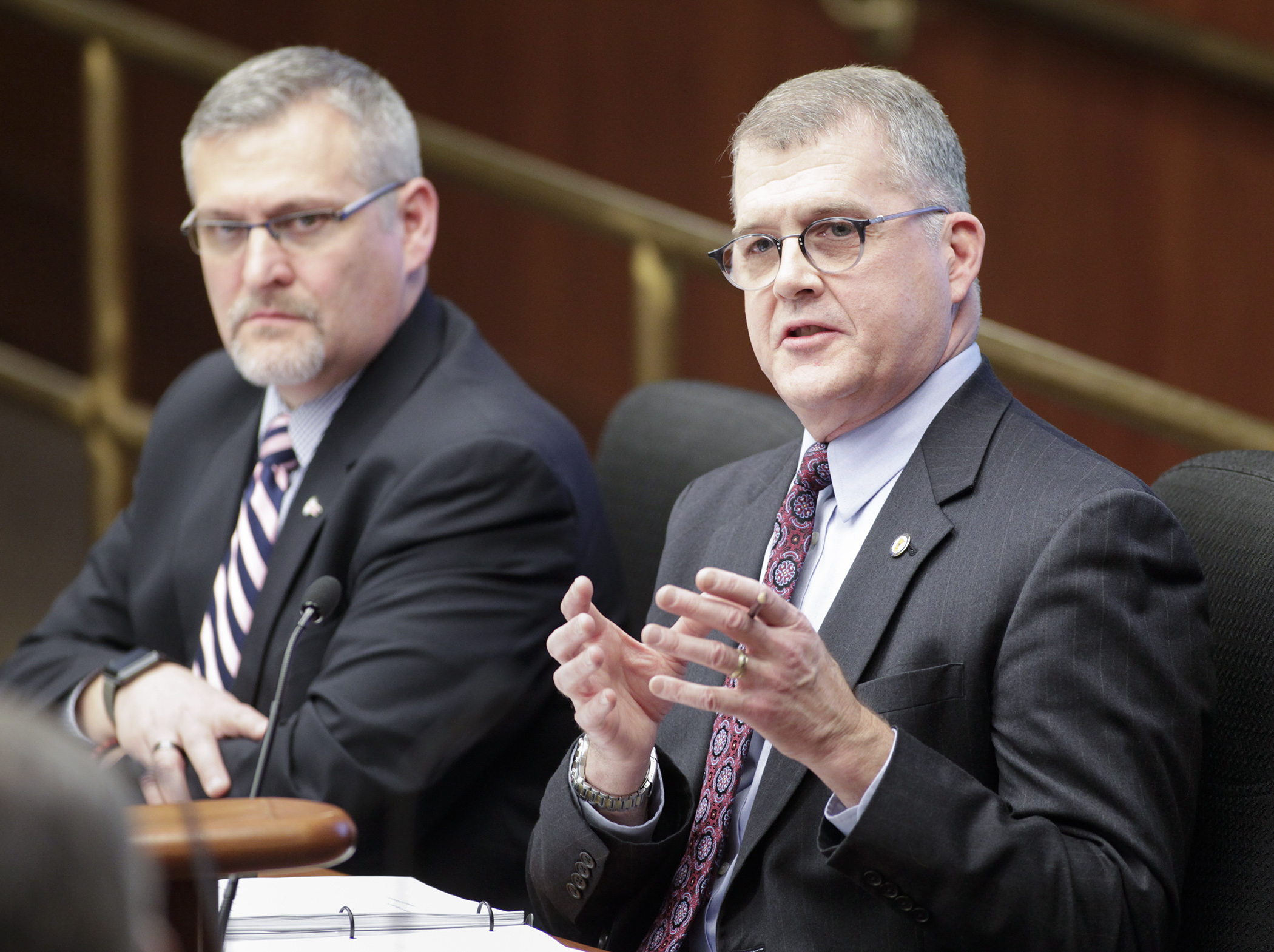Report: Minnesota becoming better prepared for oil train incident
Minnesota’s public safety agencies are better prepared than they were just two years ago for an accident that involves a train hauling hazardous materials, a new report from the Department of Public Safety asserts.
Delivered Thursday to the House Transportation Finance Committee, the report follows-up on an initial 2015 assessment of the ability of local agencies along oil train routes to respond to a derailment, collision or other potentially catastrophic incident.
Mandated by rail safety legislation passed in 2014, the report offers a number of recommendations for better preparing agencies — key among them more support for drills and exercises with local public safety first responders.
 Joe Kelly, director of the Department of Public Safety Homeland Security and Emergency Management Division, gives the House Transportation Finance Committee an overview of a report on the preparedness related to the transportation of oil and ethanol in Minnesota. Photo by Paul Battaglia
Joe Kelly, director of the Department of Public Safety Homeland Security and Emergency Management Division, gives the House Transportation Finance Committee an overview of a report on the preparedness related to the transportation of oil and ethanol in Minnesota. Photo by Paul Battaglia“Exercises test plans and, most importantly, offer opportunities” to improve upon those plans, said Joe Kelly, director of the department’s Homeland Security and Emergency Management Division.
The report proposes creating a grant program to help local agencies fund drills and exercises and to provide experts to support that training.
Public safety officials told lawmakers the department and local agencies have made strides since the 2014 oil train safety law in fully understanding their weaknesses in responding to accidents involving the transport of oil, ethanol and other hazardous materials — of which, Kelly stressed, there are very few.
“We all better understand the hazards of the transportation of these materials,” he said.
MORE Read the full report, “Minnesota’s Preparedness for Ethanol and Oil Transportation Incidents”
Other department recommendations laid out in the report include:
- aid local agencies in expanding their planning efforts by using safety account funds for local planning grants;
- enact a targeted public awareness campaign focused on how to prepare for potential oil and ethanol train incidents; and,
- offer advanced training in 10 southern Minnesota counties where ethanol is likely to move through on rail lines but where participation in prior oil train preparedness training has been limited.
In addition to steps taken by public safety agencies over the past two years, Kelly credited the state’s railroad carriers. Their efforts and investments have helped keep the number of incidents low, he said.
“I think they want the same thing we do,” Kelly said. “They want hazardous material to get from point A to point B uninterrupted” and to keep Minnesota communities safe.
Related Articles
Search Session Daily
Advanced Search OptionsPriority Dailies
Ways and Means Committee OKs proposed $512 million supplemental budget on party-line vote
By Mike Cook Meeting more needs or fiscal irresponsibility is one way to sum up the differences among the two parties on a supplemental spending package a year after a $72 billion state budg...
Meeting more needs or fiscal irresponsibility is one way to sum up the differences among the two parties on a supplemental spending package a year after a $72 billion state budg...
Minnesota’s projected budget surplus balloons to $3.7 billion, but fiscal pressure still looms
By Rob Hubbard Just as Minnesota has experienced a warmer winter than usual, so has the state’s budget outlook warmed over the past few months.
On Thursday, Minnesota Management and Budget...
Just as Minnesota has experienced a warmer winter than usual, so has the state’s budget outlook warmed over the past few months.
On Thursday, Minnesota Management and Budget...